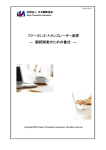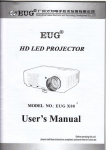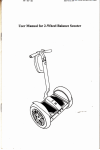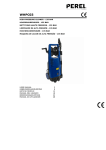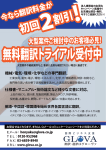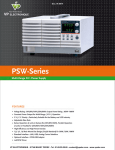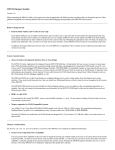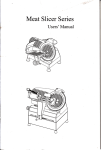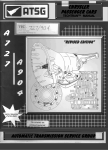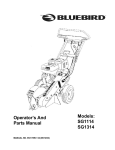Download 特許翻訳上達 ガイドブック
Transcript
特許翻訳の学習をこれから始めるあなたのための
特許翻訳上達
ガイドブック
知財活用研究会
主宰 弁理士 山元 俊仁 著
特許翻訳上達ガイドブック
【著作権について】
このレポートは著作権法で保護されている著作物です。
このレポートの著作権は山元俊仁に属します。
著作権者の許可なく、このレポートの全部又は一部をいかなる手段においても
複製、転載、流用、転売等することを禁じます。
このレポートに書かれた情報は、作成時点での著者の見解等です。
著者は事前許可を得ずに誤りの訂正、情報の最新化、見解の変更等を行う権
利を有します。
このレポートの作成には万全を期しておりますが、万一誤り、不正確な情報等
がありましても、著者・パートナー等の業務提携者は、一切の責任を負わないこ
とをご了承願います。
このレポートを利用することにより生じたいかなる結果につきましても、著者・パ
ートナー等の業務提携者は、一切の責任を負わないことをご了承願います。
-2–
Copyright (C) Toshihito Yamamoto. All Rights Reserved.
特許翻訳上達ガイドブック
もくじ
まえがき.........................................4
第一部
特許翻訳学習のガイダンス.................6
1. 特許翻訳とは......................6
2.特許明細書とは.....................10
3.特許翻訳で大事なこと...............29
4.特許翻訳は文系にはムリ?...........34
5.特許翻訳のプロを目指そう!.........38
6.特許翻訳報酬の参考事例.............45
第二部
特許翻訳上達のための学習法...............58
ステップ1 基本習得...................58
ステップ2 短期上達...................62
ステップ3 一気にプロレベルへ!.......71
あとがき.........................................80
著者プロフィール.................................83
付録
米国特許第 6,578,860 号公報
-3–
Copyright (C) Toshihito Yamamoto. All Rights Reserved.
特許翻訳上達ガイドブック
まえがき
この「特許翻訳上達ガイドブック」
(以下、ガイドブックと
呼びます)は、これから特許翻訳の学習を始めるあなたに、
特許翻訳の効果的な学習法を修得していただ
くことを目的としています。
特許翻訳上達の決め手は、効果的な学習法の
修得にあると言っても過言ではありません。効果的な学
習法によらない学習は貴重な時間の浪費になりかねないで
しょう。
このガイドブックでは、第一部において、特許翻訳学習の
ガイダンスとして、特許翻訳の学習を始めるに当たり最初
に理解しておくべきいくつかの事項を解説します。
それらの事項についての解説をじっくり読んで、特許翻訳
ではどのようなことが求められているのかを理解してくだ
さい。
また、フリーランスで(在宅で)特許翻訳の仕事をしたい
と考えているあなたのモチベーションアップにつながるよ
うに、特許翻訳報酬の参考事例を紹介します。
続いて、第二部において、特許翻訳上達のための効果的な
-4–
Copyright (C) Toshihito Yamamoto. All Rights Reserved.
特許翻訳上達ガイドブック
学習法について、ワン、ツー、スリーの3ステップで解説
します。
第二部は、ボリューム的には第一部より少ないですが、中
身は濃いので、各ステップの解説をしっかりと読み込んで
ください。そうすれば、特許翻訳上達のための効果的な学
習法を確実に修得できるでしょう。
あなたが、このガイドブックで修得された学習法を活用し
て学習することによって、特許翻訳のプロレベルまで一気
に駆け上がり、特許翻訳のプロとして活躍されることを大
いに期待しています。
弁理士 山元 俊仁
-5–
Copyright (C) Toshihito Yamamoto. All Rights Reserved.
特許翻訳上達ガイドブック
第一部
特許翻訳学習のガイダンス
1.特許翻訳とは
特許翻訳とは、特許に関連した文書(特許文書)を翻訳す
る仕事です。
特許文書にはいろいろな文書があります。なかでも重要
なのは、発明の技術内容を記載した特許明細
書です。
通常、ある国で特許を取得するためには、その国の言語で
発明の技術内容を記載した特許明細書をその国の特許庁に
提出しなければなりません。
たとえば、米国で特許を取得するためには、英語で書かれ
た特許明細書(英文明細書)を米国特許商標庁(USPT
O)に提出します。
ちなみに、日本の企業が米国で特許を取得しようとする場
合には、一般に日本語の特許明細書(和文明細書)を英語
に翻訳した英文明細書をUSPTOに提出します。
この和文明細書を英文明細書に翻訳すること
-6–
Copyright (C) Toshihito Yamamoto. All Rights Reserved.
特許翻訳上達ガイドブック
が、特許翻訳者の重要な仕事となります。
また、米国の企業が日本で特許を取得する場合には、英文
明細書を日本語に翻訳した和文明細書を日本国特許庁(J
PO)に提出します。そのように英文明細書を和文明細書
に翻訳することも特許翻訳者の重要な仕事です。
一般に各国の特許庁に提出された特許明細書は公開されま
す。このように公開された特許明細書は公開公報または特
許公報と呼ばれ、たとえば米国特許商標庁、日本特許庁(特
許電子図書館)、等々のウェブサイトから自由に無料で入手
できます。
インターネットがまだ普及していなかった頃には、たとえ
ば米国特許公報を入手するためには、特許公報の販売業者
に注文して1ページにつき80円も払っていたのです。
公報の1件当たりのページ数や購入件数が多い場合には、
公報購入代がけっこうな高額になっていました。
しかも入手できるまでに1週間以上も待たされることがあ
りました。昔のことを思えば、この点ではほんとうに良い
-7–
Copyright (C) Toshihito Yamamoto. All Rights Reserved.
特許翻訳上達ガイドブック
世の中になりました。
それはさておき、そのように公開された特許明細書(特許
公報)は、発明の技術内容を記載した技術文献として活用
され、技術の発展に貢献することになるのです。
あなたが翻訳した特許明細書も公開されて、企業の技術者
や研究者、大学の先生、あるいはその他の発明家の方々に
よって末永く活用されることになります。
あなたは特許翻訳の仕事を通じて技術の発展に
貢献することができるのです。
ところで、特許文書では特許明細書が重要だと言いました
が、特許文書には、その他にも種々の文書があります。
例えば、特許明細書のほかにも、たとえば特許庁の審査官
による特許出願についての審査結果を通知する文書(オフ
ィスアクション、拒絶理由通知書)や、特許訴訟に関する
裁判所の判決文など諸々の文書があります。
これらの特許文書の翻訳も特許翻訳者にとって重要な仕事
-8–
Copyright (C) Toshihito Yamamoto. All Rights Reserved.
特許翻訳上達ガイドブック
です。
しかし、いずれにしても、特許文書のうちでは特許明細書
がいろんな意味で最も重要な文書だと言えますので、この
ガイドブックでは、特許翻訳とは特許明細書を翻訳する仕
事であるとして話を進めることにいたします。
-9–
Copyright (C) Toshihito Yamamoto. All Rights Reserved.
特許翻訳上達ガイドブック
2.特許明細書とは
特許明細書は、前述のように発明の技術内容を記載した文
書です。すなわち、特許明細書は技術文書であると
いうことです。
特許を取得するためには、特許明細書を特許庁に提出しま
す。特許明細書に記載された発明が特許庁で審査されて所
定の要件を満たす技術内容であると認められると、その発
明は特許されることになります。
その場合、特許明細書の記載要領がまちまちであれば、特
許庁での審査が厄介なことになりますので、特許明細書は
所定の要領で記載される必要があります。
そのため、特許明細書の記載要領は特許法という法律で定
められています。
このように記載要領が法律で定められていると
いう点が特許明細書の大きな特徴の1つでもあります。
ところで、特許は排他独占的な権利ですから、その権利が
- 10 –
Copyright (C) Toshihito Yamamoto. All Rights Reserved.
特許翻訳上達ガイドブック
どの範囲まで及ぶのかを決定することが必要な場合があり
ます。
たとえば、その特許が第三者によって侵害されたような場
合です。より具体的には、特許を受けた発明(特許発明)
が他人によって無断で使用されたような場合です。
そのような場合には、その他人による無断使用が特許発明
の権利範囲(技術範囲)に入るかどうかが決定されなけれ
ばなりません。
では、どのようにしてそれが決定されるのかということで
すが、特許発明の権利範囲は特許明細書の記載に基づいて
法的に決定される仕組みになっているのです。
つまり、特許明細書は特許発明の権利範囲を法的に決定す
るための文書すなわち法律文書(権利書)でもあると
いうことです。
このように、特許明細書は、技術文書であり、法
律文書であるという二面性を有し、しかもそ
の記載要領が法律で決められている文書であ
- 11 –
Copyright (C) Toshihito Yamamoto. All Rights Reserved.
特許翻訳上達ガイドブック
るということになります。
ところで、通常の技術論文なども技術文書でありますが、
特許明細書のような法律文書ではありません。
技術論文は著作権の対象になりますから、法律文書と言え
そうでもありますが、著作権はその技術論文で用いられて
いる文章や図表などのような表現に対するものであり、技
術論文の内容に対するものではありません。
すなわち、技術論文の文章や図表などを無断使用すること
は著作権を侵害することになりますが、一般的には、技術
論文に記載された技術内容そのものを無断で使用しても著
作権を侵害したことにはならないでしょう。
つまり、技術論文は、技術文書ではあるが、特許明細書の
ように技術文書であり法律文書であるという二面性を有す
る文書ではないということです。
また、技術論文は、特許明細書のように記載要領が法律で
決められているものでもありません(学会によって記載要
領が決められているということはあるかもしれませんが)。
- 12 –
Copyright (C) Toshihito Yamamoto. All Rights Reserved.
特許翻訳上達ガイドブック
このように、特許明細書は、技術論文などと比較しても、
きわめてユニークな文書であることが分かります。
なお、余談ですが、特許明細書も、著作物ですから著作権
がありますが、その著作権の権利主体が誰であるのかにつ
いては説が分かれているようです。
しかし、いずれにしても、ここで注意すべきことは、他人
の特許明細書の記載や図面などを無断で使用することは著
作権侵害行為となるおそれがあるということです。
ただし、通常の著作物と同様に、著作権法で規定された目
的のためであれば、特許明細書を無断で使用しても著作権
を侵害することにはなりません。
特許明細書には、上記のように、英語で記載された英文明
細書や日本語で記載された和文明細書などがあり、それぞ
れ様式等が細部においては異なっています。
しかし、いずれの明細書も少なくとも下記のような事項を
含む点で共通しています。
- 13 –
Copyright (C) Toshihito Yamamoto. All Rights Reserved.
特許翻訳上達ガイドブック
発明の名称
図面の簡単な説明
発明の詳細な説明
特許請求の範囲
発明の名称は発明のタイトルを示す記載であります。図面
の簡単な説明は図面がある場合にその図面の各図を簡単に
説明する記載であります。そして、発明の詳細な説明は発
明をその実施の形態について詳細にかつ具体的に開示する
記載であります。
これらの記載がどういうものかは、正確には分からなくて
も、だいたいどういうものかは想像できるでしょうが、最
後の「特許請求の範囲」がどういう記載なのかはちょ
っと分かりにくいかも知れません。
特許請求の範囲は、特許明細書に記載された発明について
項分けして発明を上位概念で記載したものであり、項分け
された各項は請求項(クレーム)と呼ばれます。
各請求項(クレーム)の記載がどのようなものかはこれだ
- 14 –
Copyright (C) Toshihito Yamamoto. All Rights Reserved.
特許翻訳上達ガイドブック
けでは分かりにくいかと思われますが、ここでは、各クレ
ームの記載に基づいて当該発明の権利範囲が
決定されるものだということを頭に入れておくだけで
よろしいでしょう。
それでは、ご参考までに、米国特許商標庁(USPTO)
のウエブサイトからダウンロードした米国特許第
6,570,860 号の英文明細書を一例として下記に表記します。
まずこの英文明細書をさっと最後まで通読して、英文明細
書がどのようなものかを感じとってみてください。
内容を理解できなくても気にする必要はありません。とに
かく細かいことは気にせず、読むというより眺めるという
ような感じで最後まで目を通してみてください。
United States Patent No. 6,578,860
Dual function wheelchair
Abstract
The present invention implements a releasable wheel mounting
- 15 –
Copyright (C) Toshihito Yamamoto. All Rights Reserved.
特許翻訳上達ガイドブック
mechanism and a dual braking system to provide a wheelchair that
transforms from a conventional wheelchair to a companion
wheelchair. A set of small rear wheels traditionally found on a
companion wheelchair is mounted on the rear of the chair, along with
a means for removably mounting a set of large wheels. When the
large wheels are removed, the chair reverts to a companion chair
having handles on the rear of the chair for steering by a second
person. With the large wheels mounted on the chair, the chair serves
as a conventional wheelchair capable of being steered and propelled
by the chair's occupant. To enable the dual nature of the chair, the
present invention employs a braking system that allows the chair to
be stopped by the occupant in either mode. A mechanical lever
system applies a braking force to the large wheels when the chair is
in the conventional mode, and a cable connection allows the same
lever to actuate a similar braking operation on the small wheels in the
companion mode.
BACKGROUND OF THE INVENTION
1. Field of the Invention
The present invention relates generally to wheelchairs, and in
- 16 –
Copyright (C) Toshihito Yamamoto. All Rights Reserved.
特許翻訳上達ガイドブック
particular to a dual function wheelchair that serves as both a
conventional wheelchair and a companion wheelchair.
2. Description of Related Art
Wheelchairs traditionally are categorized as being of one of two
types: a conventional wheelchair, and a companion wheelchair. A
conventional wheelchair has two large rear wheels that allow the
occupant of the chair to propel himself by placing his hands on the
two large wheels and rotating the large wheels. A companion
wheelchair has two small rear wheels that do not allow the occupant
to steer or propel the wheelchair. Instead, the companion wheelchair
includes handles on the rear of the chair that permits a second person,
or "companion," to push and steer the wheelchair. Companion
wheelchairs, because they lack a large rear wheel, are easier to fold
up and store away, and are used frequently when travel is required.
Those who use a companion wheelchair are typically forced to
purchase both types, unless one is never in need to drive one's own
chair. There are many people that could benefit from a companion
wheelchair, but cannot afford the expense of two wheelchairs and
must make do with a conventional wheelchair.
- 17 –
Copyright (C) Toshihito Yamamoto. All Rights Reserved.
特許翻訳上達ガイドブック
SUMMARY OF THE INVENTION
The present invention implements a releasable wheel mounting
mechanism and a dual braking system to provide a wheelchair that
transforms from a conventional wheelchair to a companion
wheelchair. A set of small rear wheels traditionally found on a
companion wheelchair is mounted on the rear of the chair, along with
a means for removably mounting a set of large wheels. When the
large wheels are removed, the chair reverts to a companion chair
having handles on the rear of the chair for steering by a second
person. With the large wheels mounted on the chair, the chair serves
as a conventional wheelchair capable of being steered and propelled
by the chair's occupant. To enable the dual nature of the chair, the
present invention employs a braking system that allows the chair to
be stopped by the occupant in either mode. A mechanical lever
system applies a braking force to the large wheels when the chair is
in the conventional mode, and a cable connection allows the same
lever to actuate a similar braking operation on the small wheels in the
companion mode. Thus, the present invention provides a wheelchair
that easily converts from a companion mode to a conventional mode
and offers a unique single lever braking system that operates in both
modes.
- 18 –
Copyright (C) Toshihito Yamamoto. All Rights Reserved.
特許翻訳上達ガイドブック
BRIEF DESCRIPTION OF THE DRAWINGS
The exact nature of this invention, as well as its objects and
advantages, will become readily apparent upon reference to the
following detailed description when considered in conjunction with the
accompanying drawings, in which like reference numerals designate
like parts throughout the figures thereof, and wherein:
FIG. 1 is an elevated perspective view of a preferred embodiment of
the present invention showing the invention in "conventional" mode;
and
FIG. 2 is a side view of a preferred embodiment of the present
invention showing the invention in "companion" mode.
DESCRIPTION OF THE PREFERRED EMBODIMENTS
The following description is provided to enable any person skilled in
the art to make and use the invention and sets forth the best modes
contemplated by the inventor of carrying out his invention. Various
modifications, however, will remain readily apparent to those skilled in
- 19 –
Copyright (C) Toshihito Yamamoto. All Rights Reserved.
特許翻訳上達ガイドブック
the art, since the general principles of the present invention have
been defined herein specifically to provide a dual finction wheelchair
with a single actuator braking system.
FIG. 1 is an elevated perspective view of the present invention in its
conventional mode. That is, two large rear wheels 100 are mounted
on the chair 105 that allow the occupant of the chair to reach over the
armrests 110 and grasp the wheels' rim 115 and push on the wheels
100. Pushing both wheels at once causes the wheelchair 105 to
move forward in a well known manner, while moving the left or right
wheel more than the other will cause the wheelchair to turn. Other
components of the wheelchair, such as the back support 120, seat
125, front wheels 130, and front wheel supports 135 are conventional
components that do not require further elaboration for an
understanding of the present invention.
FIG. 1 also illustrates a second set of rear wheels 140 that are of
similar diameter and size to the front wheels 130, as is typical of
companion wheelchairs. The small rear wheels 140 are supported on
the frame 145 of the wheelchair 105 at rear brackets 150. It is
contemplated that the small rear wheels 140 remain attached to the
wheel chair 105 while the present invention is operating in either
- 20 –
Copyright (C) Toshihito Yamamoto. All Rights Reserved.
特許翻訳上達ガイドブック
mode, since the large wheels 100 may be position to be either
redundant with the small wheels 140 (i.e., mutually touching the
ground) or they may elevate the small wheels 140 slightly off the
ground during operation in the conventional mode.
FIG. 2 is a side view of the present invention shown in the companion
mode. The large rear wheels 100 have been removed and the small
rear wheels 140, along with the small front wheels 130, form the
rolling mode for the chair. A cylindrical mounting slot 155 on each side
of the frame 145 provides a mounting location for the large wheels
100. The large wheels 100 may be secured with a threaded member
such as a bolt that engages with a threaded portion of the slot 155, or
the wheel may be secured with another quick-release mechanisms.
The nature of the connection of the large wheel requires only that the
wheel be securely fastened when in operation without unduly
hindering the rotation of the wheel with surplus friction that would
hinder the operation of the chair, while allowing the wheel to be
removed without undo effort.
FIG. 2 further illustrates a unique braking mechanism that permits the
occupant of the chair to decelerate or hold stationary the wheelchair
using a hand-operated braking system in either the conventional or
- 21 –
Copyright (C) Toshihito Yamamoto. All Rights Reserved.
特許翻訳上達ガイドブック
the companion mode. A braking lever 160 positioned at the forward
portion of the frame 145 near each hand is shaped to permit easy
grasping by a user and pivots forward and backward via a pin 180
that secures a braking lever 160 to a bracket 170. A second pivoting
member 175 is mounted adjacent the braking lever 160 by a pin by a
pin 165. The rotation of the braking lever 160 is coupled to the
rotation of the second pivoting member 175 by a connecting bar 185,
such that a rotation of the braking lever 160 in the clockwise direction
causes a corresponding rotation of the second pivoting member 175
in the same direction. As explained below, the rotation of the second
pivoting member 175 causes a contact member to apply direct
pressure to the rear wheels of the chair, whether the chair is operating
in conventional or companion mode.
When the chair 105 is operating in conventional mode, a lateral
projection 190 on the second pivoting brake member 175 normally
resides adjacent to the large rear wheel 100. In this position, the
wheel turns unhindered by the lateral projection 190. However, when
the braking lever 160 is pivoted forward the second pivoting brake
member 175 rotates in a manner that moves the lateral projection 190
into the path of the rear wheel 100, causing contact with the wheel.
The more force that is applied to the braking lever 160 by the user,
- 22 –
Copyright (C) Toshihito Yamamoto. All Rights Reserved.
特許翻訳上達ガイドブック
the greater the force of the lateral projection 190 on the wheel 100,
until the wheel is either brought to a complete stop, or prevented from
rotating (as may be necessary on an inclined surface). If the braking
lever 160 is pivoted backward, the lateral projection 190 is retracted
thereby releasing the rear wheel 100. In this manner, the wheelchair
105 is braked while in the conventional mode.
The second pivoting brake member 175 is also connected to a cable
195 having an outer sheath mounted on the bracket 170. Moving the
braking lever 160, and the accompanying movement of the second
pivoting brake member 175, causes the cable 195 to be pulled
through the sheath. The opposite end of the cable 195 is connected
to a first pivoting brake 200 mounted adjacent the small rear wheel
140. A spring 215 is provided to bias the first pivoting brake 200 in a
non-contact position. However, when the cable 195 is actuated by the
braking lever 160 the portion of the first pivoting brake 200 is rotated
by the cable 195, causing a complementary movement of the other
end of the first pivoting brake 200 through the pivot pin 205. The end
of the first pivoting brake 200 includes a lateral projection 210 that
contacts the small rear wheel 140 when the first pivoting brake 200 is
actuated. The spring 215 returns the first pivoting brake 200 to the
non-contact position when the force is removed from the braking lever
- 23 –
Copyright (C) Toshihito Yamamoto. All Rights Reserved.
特許翻訳上達ガイドブック
160.
As can be appreciated, the wheelchair of the present invention
converts easily and rapidly from a conventional wheelchair to a
companion wheelchair by simply removing the large wheels that
provide the occupant with a mode of propulsion. To facilitate the
transition between the two modes, a braking system has been
developed that operates in either mode to arrest the motion of the
wheelchair or prevent the wheelchair from moving while the brake is
set. The present invention solves the problem encountered by those
who would like to own both a conventional wheelchair and a
companion wheelchair without having to purchase two separate
wheelchairs.
Those skilled in the art will appreciate that various adaptations and
modifications of the just-described preferred embodiment can be
configured without departing from the scope and spirit of the invention.
Therefore, it is to be understood that, within the scope of the
appended claims, the invention may be practiced other than as
specifically described herein.
What is claimed is:
- 24 –
Copyright (C) Toshihito Yamamoto. All Rights Reserved.
特許翻訳上達ガイドブック
1. A wheelchair having a set of front wheels and a first set of rear
wheels generally having the same diameter as the set of front wheels
operatively attached to a frame, and further comprising a second set
of rear wheels having a diameter substantially larger than the first set
of rear wheels, the first and second set of rear wheels are both
rotatably attached to the frame for simultaneous movement with the
wheelchair, the second set of rear wheels is removable mounted on
said wheelchair, whereby the wheelchair is configured as a
companion wheelchair further comprising a braking system for
applying a bracking contact to both the first set of rear wheels and the
second set of rear wheels, the braking stem actuated by a lever
mounted on the wheelchair.
2. The wheelchair of claim 1 wherein the braking system comprises a
first pivoting member coupled to said lever for applying direct
pressure to said second set of rear wheels, and a cable connected to
the first pivoting member for controlling a second pivoting member
that applies direct pressure to said first set of rear wheels.
3. The wheelchair of claim 2 wherein the braking system further
comprises a spring to bias the second pivoting member in a
- 25 –
Copyright (C) Toshihito Yamamoto. All Rights Reserved.
特許翻訳上達ガイドブック
non-braking condition.
4. A convertible wheelchair having a frame unit for supporting a seat
comprising, a pair of front wheels operatively connected to the frame
unit, a first set of rear wheels operatively connected to the frame unit,
a second set of rear wheels, larger in diameter than the first set of
rear wheels, is operatively connected to the frame unit and removably
connected to the frame unit; and a braking system operatively
connected to the frame unit having a handle unit positioned on the
frame unit for grasping by the user, a first brake member for contact
with the first set of rear wheels and a second brake member for
contact with the second set of rear wheels, whereby moving the
handle unit simultaneously applies the first brake member to the first
set of rear wheels and the second brake member to the second set of
rear wheels, when the second set of rear wheels are mounted on the
frame unit.
5. The convertible wheelchair of claim 4 wherein the first brake
member is pivotally connected to the handle unit and the second
brake member is connected to the first brake member by a cable, the
second brake member is pivotally connected to the frame unit.
- 26 –
Copyright (C) Toshihito Yamamoto. All Rights Reserved.
特許翻訳上達ガイドブック
6. The convertible wheelchair of claim 5 wherein the braking system
further comprises a spring member to bias the second brake member
to a non-braking condition.
7. The convertible wheelchair of claim 6 wherein the pair of front
wheels and the first set of rear wheels have approximately the same
diameters.
8. The convertible wheelchair of claim 5 wherein the handle unit
includes a lever pivotally mounted on the frame unit, one end of the
lever is configured for grasping by a user and the other end is
pivotally attached to a connecting bar with the pivotally mounting of
the lever on the frame unit positioned between the respective ends of
the lever, the connecting bar is pivotally mounted to the second brake
member at one end of the second brake member and the cable is
connected at the other end of the second brake member, the cable is
spring mounted to the first brake member to bias the first brake
member away from the first set of rear wheels.
いかがでしたか、英文明細書の感じがなんとなくつかめた
ような気がしますか?ここでは、それで十分ですので、安
心してくださいね。
- 27 –
Copyright (C) Toshihito Yamamoto. All Rights Reserved.
特許翻訳上達ガイドブック
ここでひとつだけ付け加えておきますと、終わりのほうに
What is claimed is:とありましたが、これが「特許請求の
範囲」です。この米国特許の場合には、特許請求の範囲に
は8個の請求項(クレーム)が含まれています。
それでは、もう一度、各クレームの記載を眺めてみてくだ
さい。例えば、クレーム1を見ると、途中にはピリオ
ドがなく、最後まで記述が続いていますが、こ
れがクレームの記載の特徴なのです。
このようなクレームの記載をどのように翻訳す
るかを習得することが特許翻訳の学習で最も
大事なことのひとつです。
なお、上記米国特許の公報(米国特許公報)がこのガイド
ブックの末尾に付録として添付されています。この公報の
ように図面がある場合には、明細書や公報を読むときには
必ず図面を参照しながら読み進めることが大
事ですので、このことも頭にいれておいてください。
- 28 –
Copyright (C) Toshihito Yamamoto. All Rights Reserved.
特許翻訳上達ガイドブック
3.特許翻訳で大事なこと
特許翻訳は、特許明細書を翻訳することであり、特許明細
書に記載された発明の権利範囲(技術範囲)は、その特許
明細書の記載、特に特許請求の範囲(クレーム)の記載に
基づいて決定されることについては説明しました。
特許明細書に記載された発明の権利範囲を決定する場合に、
その特許明細書の原文と翻訳文との間で決定内容が実質的
に同じになることが必要です。
すなわち、発明の権利範囲について原文と翻訳文と間で解
釈上の齟齬が生じるようなことがあっては困るということ
です。
このことから、特許翻訳では、原文にできるだけ
忠実に翻訳することが要求されます。特許翻
訳では自分勝手な意訳は許されません。
言いかえると、翻訳文が原文とぴたりと重なり合
うように、すなわち、翻訳文から原文がきち
んと再現できるように翻訳することが望まし
- 29 –
Copyright (C) Toshihito Yamamoto. All Rights Reserved.
特許翻訳上達ガイドブック
いということです。このことは非常に大事ですの
でしっかりと頭に入れておいてください。
特許翻訳においては、他にも大事なことがあります。その
1つが、特許翻訳では、誤訳がないように翻訳する
ということです。
誤訳がないように翻訳するのは当然のことと思われるかも
知れませんが、実際には特許翻訳に限らず一般に翻訳では
誤訳はどうしても避けることができないものです。
文学作品などの翻訳では、誤訳がかえって作品の評価を高
める場合もあるようですが、特許明細書の翻訳では、話は
違います。
例えば、誤訳によってその特許明細書に記載された発明の
権利範囲が本来よりも著しく狭く解釈されることになって
しまうおそれがあります。また、最悪の場合には、誤訳の
せいで特許を取得できなくなるということもあります。
したがって、特許翻訳では、誤訳がないように細心の注意
を払いながら翻訳しなければならないのです。
- 30 –
Copyright (C) Toshihito Yamamoto. All Rights Reserved.
特許翻訳上達ガイドブック
もっとも、特許翻訳の場合でも、重大な誤訳と軽微な誤訳
とがあるのも事実です。
軽微な誤訳とは、それが誤訳だとすぐ分かるような単純な
ものです。特許実務では、そのような誤訳は補正すること
が許されます。
問題は重大な誤訳です。ここで重大な誤訳とは、特許実務
で補正することが許されないないような誤訳です。
つまり、その誤訳を補正すると、それにより発明の権利範
囲の決定内容が違ってくるような誤訳は補正することは許
されません。
このような重大な誤訳は絶対にしないように注意しなけれ
ばなりません。
前述のように、発明の権利範囲は特許明細書の記載、特に
特許請求の範囲内の各請求項(クレーム)の記載に基づい
て決定されます。したがって、クレームの翻訳では特
に誤訳がないように的確に翻訳することが求
- 31 –
Copyright (C) Toshihito Yamamoto. All Rights Reserved.
特許翻訳上達ガイドブック
められます。このことをしかりと頭に入れておきましょ
う!
誤訳はもちろん可能な限り回避しなければなりませんが、
誤訳と同様にあるいはそれ以上に怖いのが「訳抜け」
です。
訳抜けとは、ある文章や段落が翻訳されないまま翻訳文で
すっぽり抜けてしまうことです。
訳抜けを回避するには特許翻訳者の注意力や集中力が頼り
です。ただ、訳抜けを回避するための手段としては、例え
ば文章単位で翻訳する方法や、翻訳ソフトを活用する方法
などがありますが、それらついては後で具体的にお話しよ
うと思います。
特許翻訳において大事なこととして、特許翻訳では原文と
翻訳文とが出来るだけ重なり合うように自分勝手な意訳を
しないで原文に忠実に翻訳するようにし、さらに誤訳や訳
抜けを回避するように十分な注意を払わなければならない
ことについて説明しました。
- 32 –
Copyright (C) Toshihito Yamamoto. All Rights Reserved.
特許翻訳上達ガイドブック
そのためには、何と言っても、特許翻訳者は、特許明細書
を適切に翻訳できる語学力(英語力と日本語力)を高める
ように日々研鑽することを期待されます。
ここで、語学力とは英語や日本語を運用する能力のことで
あります。とりわけ、日本語の運用能力が非常に大事です。
要するに、特許翻訳では英語力はもちろん大事ですが、特
許明細書を読み込むことができる日本語力が
さらに大事だということです。
また、特許明細書の内容を理解できる技術的知識も大事で
すが、特許翻訳においてどの程度の技術的知識が必要だろ
うかということについては後で具体的にお話しようと思い
ます。
- 33 –
Copyright (C) Toshihito Yamamoto. All Rights Reserved.
特許翻訳上達ガイドブック
4.特許翻訳は文系にはムリ?
特許明細書は技術文書ですから、その内容を理解するには
技術的知識が必要であることは当然です。では、文系には
特許翻訳はムリでしょうか?
いいえ、そんなことはありません。と言うより、私が知る
かぎりでは、特許翻訳者として活躍しているのは理系より
文系のほうが多いくらいです。
もちろん、技術文書である特許明細書を翻訳するためには、
その特許明細書に記載された発明の技術内容を理解できる
ことが有意義です。
では、理系の特許翻訳者ならどんな発明の技術内容でも理
解できるかというと、けっしてそんなことはありません。
ちなみに特許の専門家である理系弁理士でさえ、特許明細
書に記載された発明の技術内容を理解するのに苦労するこ
とがけっこうあるのです。
特許翻訳は、英語を日本語に、あるいは日本語を英語に翻
- 34 –
Copyright (C) Toshihito Yamamoto. All Rights Reserved.
特許翻訳上達ガイドブック
訳する作業です。したがって、最も大事なのは、英語
力、日本語力のような語学力です。
もっと厳密に言えば、英語や日本語の運用能力です。この
「運用能力」は、単なる語学力ではなくて、英語でも日
本語でも特許明細書などの原稿の行間を読め
る能力のことです。
つまり、このような英語運用能力があれば、それによって
技術的知識の要件はある程度はカバーできるとも言えるの
です。
私の知人の例を紹介しますと、彼は東京外国語大学の出身
で、商社に10年ほど勤務した後に、私が勤務していた都
内の特許事務所に特許翻訳者として入所しました。
彼の場合、入所時には技術的知識は皆無と言っていいくら
いでした。最初は慣れない特許明細書にとまどったようで
したが、すばらしい英語運用能力の持ち主でしたから、め
きめき上達して、あっという間にプロレベルに到達したの
です。
- 35 –
Copyright (C) Toshihito Yamamoto. All Rights Reserved.
特許翻訳上達ガイドブック
すぐれた英語運用能力があれば、最初は技術的知識が無く
ても、特許明細書でもきちんと翻訳できるようになるのだ
なと彼の例を見ていてつくづく感じたものです。
永年にわたってフリーランスの特許翻訳者として活躍し良
い仕事をしていた彼も、今では帰らぬ人となってしまいま
した。特許翻訳者はどうあるべきかと語り合っていたころ
のことが懐かしく思い出されます。
特許翻訳においては、極論すれば、英語と日本語の運用能
力が大事であって、技術的知識はあくまで手段であると言
うことです。
ただ、そうは言っても、特許翻訳では技術的知識があった
ほうがやりやすいことは事実です。したがって、翻訳の質
を高めるために、技術的知識を習得するための学習をする
ことは大いに意義のあることです。
しかし、その場合、技術的知識を習得するということで、
あれもこれもいっしょくたに習得しようとするのはあまり
良くありません。
- 36 –
Copyright (C) Toshihito Yamamoto. All Rights Reserved.
特許翻訳上達ガイドブック
最初のうちは自分の好きな技術分野または関
心のある技術分野に特化して、その分野の技
術的知識を習得し深めていくようにするのが賢明
です。
技術的知識を習得する方法はいろいろありますが、やはり
自分に合った方法を選ぶのがいいでしょう。
たとえば、独学が得意な人は、適当な啓蒙書や入門書など
を購入して学習するのもいいかも知れません。
体系的な学習を希望する人には、放送大学の講座を受講し
て学習するのがオススメです。
具体的にどのような技術分野の学習から始めるのがいいか
というと、好みもあるでしょうから一概には言えませんが、
文系の人にはITや通信関連の分野がとっつきやすいよう
ですので、それらの分野から入っていくのもいいかも知れ
ませんね。
- 37 –
Copyright (C) Toshihito Yamamoto. All Rights Reserved.
特許翻訳上達ガイドブック
5.特許翻訳のプロを目指そう!
特許翻訳の勉強を始めたからには、特許翻訳のプロを目指
しましょう!
ここで特許翻訳のプロとは、特許翻訳を仕事で行っている
人たちのうち、特にフリーランスで(在宅で)特許翻訳を
専業としてまたは副業として行っている人のこととします。
特許翻訳のプロになるためには、何はともあれ、特許翻
訳のプロになると決意することが最も重要な
ことです。
そして、そのように決意したうえで、特許翻訳のプロ
になるための学習を集中的に継続することです。
とは言っても、特許翻訳の学習をこれから始める人や初め
て間がない人(初級者)には、どのような学習をすればよ
いのか分かりにくいかもしれませんね。
でも、心配いりません。このガイドブックでは、特許翻訳
上達のための学習法について第二部で詳しく説明いたしま
- 38 –
Copyright (C) Toshihito Yamamoto. All Rights Reserved.
特許翻訳上達ガイドブック
すのでご安心ください。
特許明細書は技術文書ですから、それを翻訳するにはある
程度の技術的知識は必要です。
では、特許翻訳で必要な技術的知識とはどの程度の知識か
と言いますと、例えば用語集などの各項目の用語について
説明されている程度の内容で十分です。
要するに、その用語がどのような意味内容のものかを知っ
ている程度でいいのです。この程度であれば、ネットで検
索すればいくらでも得られます。
用語の内容を把握することは大事ですが、それとともに、
出来るだけ易しく書かれた入門書などを読んでおくと用語
の内容も理解しやすいのでお勧めします。
つぎに、特許明細書は、それに記載された発明の権利範囲
を決定するための法律文書(権利書)であること、そして、
その記載要領が特許法で規定されていることについて前に
説明しましたね。
- 39 –
Copyright (C) Toshihito Yamamoto. All Rights Reserved.
特許翻訳上達ガイドブック
それで、特許翻訳では特許法の知識も必要ですが、これも
できるだけ易しい入門書を通読するだけで十分です。
要するに、特許とはどのような制度かを概略的に理解でき
ればいいということです。
特許翻訳に関連する事項としては、特許明細書の記載要領
などですから、それらに関連する事項を理解しておけば十
分です。
それ以上に特許法全般について学習する必要はありません。
要するに、特許翻訳に関連するところだけをおさえておけ
ばいいのです。
何と言っても、特許翻訳で最も大事なのは、英語
の運用能力です。
特許翻訳の仕事をするためには、英検やTOIECのよう
な英語検定資格は必要かという質問をうけることがよくあ
ります。
答えとしては、特許翻訳の仕事をすること自体には、英語
- 40 –
Copyright (C) Toshihito Yamamoto. All Rights Reserved.
特許翻訳上達ガイドブック
検定の資格は必要ありません。
しかし、特許翻訳のプロとして自分を売り込むためには、
たとえば英検1級の資格があれば、英語力に関しては一応
信頼される可能性があるでしょうから、有利でしょうね。
また、TOIECも900台くらいであれば、それなりに
高く評価されるでしょう。
そのような観点からも、英検1級やTOIEC900台の
ような英検定資格を取得することは意義のあることですの
でお勧めします。
特許翻訳のプロとして活躍するためには、英
文和訳(英和)だけでなく和文英訳(和英)
ができるようにならなければなりません。
それは、特許翻訳では和英がきちんと出来る人が少なくて、
和英の需要が多く、翻訳料も和英のほうが英和よりだんぜ
ん高いからです。
特許翻訳のプロに期待されることは、特許明細書の原稿と
- 41 –
Copyright (C) Toshihito Yamamoto. All Rights Reserved.
特許翻訳上達ガイドブック
翻訳文とが出来るだけぴたりと重なり合うように翻訳する
ことができるということです。
自己流の意訳や翻訳しにくい語句等を勝手に
書き変えるようなことなどは絶対無しです。
特許翻訳のプロは、たとえ特許明細書の原稿
が読みにくい文章であっても、行間を読んで
原稿作成者の意図を把握できることを求めら
れます。
原稿の文章がなっていないとか、原稿が読みにくいとか愚
痴を言ってはなりません。
そもそも特許明細書は読みにくいものなのです。
それは、特許明細書が技術文書であるだけでなく法律文書
でもあるからです。それと、特許明細書を書いている人た
ちが必ずしも文章力があるとはかぎらないからでもありま
すが・・・。
だから、特許翻訳のプロは、特許明細書はそういうものだ
- 42 –
Copyright (C) Toshihito Yamamoto. All Rights Reserved.
特許翻訳上達ガイドブック
と割り切って、果敢に特許明細書に取り組んでそれを征服
することが求められるのです。
特許翻訳は特許明細書との格闘技みたいなものです。特許
明細書の翻訳を1件やり終えると、勝負に勝ったような爽
快感があるものです。
あなたにも、そのような爽快感をぜひ味わってほしいと思
います。
特許翻訳のプロへの登竜門としては、一番手っ取り早いの
は、特許事務所や翻訳会社のトライアルを受け
ることでしょう。
また、ネットや新聞など、あらゆるメディアにおける特許
翻訳者の募集広告などから特許翻訳者の求人情報をゲット
するように常にアンテナを張り巡らしておくことも大事で
す。
特許翻訳の受注先(発注元)には、特許事務所と翻訳会社
があります。どちらが受注先としていいかという質問を受
けることがあります。
- 43 –
Copyright (C) Toshihito Yamamoto. All Rights Reserved.
特許翻訳上達ガイドブック
結論から言うと、特許翻訳者を大事にしてくれる
ところであれば、どちらでもいいと言えます。
さらに、言えば、それプラス、仕事をコンスタントに依頼
してくれるところならなおいいということです。
フリーランスで(在宅で)特許翻訳の仕事をする場合にい
ちばん関心があり心配でもあることは、仕事がコンスタン
トにあるかといことでしょう。
フリーランサーにとって仕事が途切れてしまうとほんとう
に心配なものです。しかし、仕事ですから途切れてしまう
こともあるかも知れません。
そのためには、安全策として、受注先を複数もつことも
考える必要がありますので、平素からそのように心がけ
ることが大事でしょう。
特許翻訳者の目標は、仕事のやりがいを感じながら、豊か
な生活をエンジョイすることです。この目標に向かって進
みましょう!
- 44 –
Copyright (C) Toshihito Yamamoto. All Rights Reserved.
特許翻訳上達ガイドブック
6.特許翻訳報酬の参考事例
あなたは、フリーランサー(在宅専業または副業)として
特許翻訳で毎月どのくらい稼ぐことができるでしょうか?
特許翻訳の翻訳料(報酬)は、通常たとえば1ワード何円
というようなレートで計算されます。下記の式が特許翻訳
料(報酬)の計算式です。
翻訳料(報酬)=RxSxTxD
上記の式において、
Rは発注元(特許事務所や翻訳会社など)によって決
められたあなたの翻訳料(レート)、
Sはあなたが1時間に翻訳できるワード数(あなたの
翻訳スピード)、
Tはあなたが1日に翻訳の仕事をできる時間数、
Dはあなたが1ヶ月に翻訳の仕事をできる日数です。
- 45 –
Copyright (C) Toshihito Yamamoto. All Rights Reserved.
特許翻訳上達ガイドブック
翻訳料(レート)は、一般的な目安としては、英文明細書
を日本語に翻訳する英文和訳(英和)が英語1ワード当た
り10∼15円くらい、そして、和文明細書を英語に翻訳
する和文英訳(和英)が英語1ワード当たり20∼25円
くらいでしょう。英文和訳よりも和文英訳の翻訳料(レー
ト)がだんぜん高いことに注目してください!
では、あなたがフリーランサーとして(在宅で)特許翻訳
の仕事をされる場合を想定して特許翻訳報酬の参考事例を
説明させていただきますね。
参考事例1
あなたは、これまで特許翻訳を熱心に学習してきたので、
いよいよ特許翻訳の仕事を始められるようになりました。
おめでとうございます。
あなたは、家庭の主婦(主夫)です。家事や育児という大
事な仕事があります。いちばん大事な育児に専念したいか
ら、会社勤めはしたくない、でも大好きな英語を活かせる
やりがいのある仕事をしてお金を稼ぎたい!ということで、
- 46 –
Copyright (C) Toshihito Yamamoto. All Rights Reserved.
特許翻訳上達ガイドブック
在宅で特許翻訳の仕事をしようと決めたのでしたね。
でも、あなたは特許翻訳のプロとしてはまったくの初心者
ですから、英文和訳の仕事から始めることにした。あなた
の翻訳料(レート)は10円/ワードと決められました。
しょうがないですよね、初心者ですからね・・・。
あなたが1時間に翻訳できるワード数(翻訳スピード)は
せいぜい200ワードくらいでしょう。
あなたには家事や育児などの大事な仕事があるから、翻訳
の仕事に使える時間(稼働時間)は1日せいぜい5時間く
らいでしょうね。
たとえば、午前中2時間、午後2時間、夜1時間。通勤時
間がないから、それくらいの時間は何とかなりますよね。
1ヶ月に翻訳の仕事をできる日数(稼働日数)は平均して
せいぜい15日くらいと考えておくのが無難でしょう。
ところで、ご参考までに、下記の英文は約213ワードで
す。
- 47 –
Copyright (C) Toshihito Yamamoto. All Rights Reserved.
特許翻訳上達ガイドブック
The present invention implements a releasable wheel mounting
mechanism and a dual braking system to provide a wheelchair that
transforms from a conventional wheelchair to a companion
wheelchair. A set of small rear wheels traditionally found on a
companion wheelchair is mounted on the rear of the chair, along with
a means for removably mounting a set of large wheels. When the
large wheels are removed, the chair reverts to a companion chair
having handles on the rear of the chair for steering by a second
person. With the large wheels mounted on the chair, the chair serves
as a conventional wheelchair capable of being steered and propelled
by the chair's occupant. To enable the dual nature of the chair, the
present invention employs a braking system that allows the chair to
be stopped by the occupant in either mode. A mechanical lever
system applies a braking force to the large wheels when the chair is
in the conventional mode, and a cable connection allows the same
lever to actuate a similar braking operation on the small wheels in the
companion mode. Thus, the present invention provides a wheelchair
that easily converts from a companion mode to a conventional mode
and offers a unique single lever braking system that operates in both
modes.
- 48 –
Copyright (C) Toshihito Yamamoto. All Rights Reserved.
特許翻訳上達ガイドブック
これくらいの英文なら1時間あれば軽く翻訳できそうでし
ょ?・・・
それでは、あなたが1ヶ月に稼ぐことができる翻訳料(報
酬)を、上記の計算式で計算してみますと・・・
10円/ワードx200ワード/時間
x5時間/日x15日=15万円
となります。これから源泉税10%が差し引かれるので、
手取りは13万5千円です。なお、差し引かれた源泉税は
確定申告をしてほとんど返還してもらえるのでご安心くだ
さい。
参考事例2
あなたは頑張って特許翻訳の仕事を続けています。
「英文明
細書を翻訳していると、技術的なことや英文表現のことな
ど分からないことがいっぱいあって、けっこう大変だけど、
翻訳をしながらいろんなことを学べるし、翻訳をこなして
いくにつれて力がついてくるように感じられるし、とにか
く特許翻訳の仕事が楽しいです!」とあなたからのメール
- 49 –
Copyright (C) Toshihito Yamamoto. All Rights Reserved.
特許翻訳上達ガイドブック
に書いてあって、うれしくなりました。その意気で前進あ
るのみ!
これまで頑張って来たかいがあって、最近では、あなたは
1時間に300ワードくらい翻訳できるようになりました。
また、あなたの翻訳の質が良くなったということで、翻訳
料(レート)を12円/ワードに上げてもらえました。
でも、家事や育児は手を抜きたくないから、1日の稼働時
間や、1ヶ月の稼働日数はそのままということにしました。
それでは、あなたの1ヶ月の翻訳料(報酬)を計算してみ
ましょうね。
12円/ワードx300ワード/時間
x5時間/日x15日=27万円
となりました。これから源泉税10%が差し引かれて手取
りで24万3千円ということです。参考事例1の場合より
かなり増えましたね!
- 50 –
Copyright (C) Toshihito Yamamoto. All Rights Reserved.
特許翻訳上達ガイドブック
参考事例3
あなたは、これまで英文明細書を日本語に翻訳する英文和
訳の仕事をたくさんやってきて、英文明細で使われる文体、
表現、語句などたくさんのことを学びましたね。
その甲斐あって、和文明細書を英語に翻訳する和文英訳の
仕事をもらえるようになりました。翻訳料(レート)は2
0円/ワードということです。
和文英訳の学習はたくさんしてきたけど、和文英訳を仕事
としてやるのはまだ経験不足だから、あなたの翻訳料(レ
ート)が20円/ワードというのは、これでよしとしまし
ょうね。
それに、和文英訳のスピードもまだせいぜい200ワード
/時間くらいと言ってましたよね。
それでは、1日の稼働時間と1ヶ月の稼働日数は変えない
として、あなたが特許翻訳で稼ぐことができる翻訳料(報
酬)を計算すると、
- 51 –
Copyright (C) Toshihito Yamamoto. All Rights Reserved.
特許翻訳上達ガイドブック
20円/ワードx200ワード/時間
x5時間/日x15日=30万円
となりました。
源泉税10%を差し引いて手取りで27万7千円です。参
考事例1と比べると大幅に増収しましたね。やっぱし和文
英訳が出来るようにならないとウソだと思うでしょ?
参考事例4
特許翻訳では、英文和訳は出来る人は多いけど和文英訳が
できる人は少ないと言われています。
事実そうなんですが・・・実際にやってみて慣れてくると
英文和訳より和文英訳のほうがやりやすいと思いません
か?
でも、よく頑張りましたね。翻訳料(レート)を22円/
ワードに上げてもらえて、翻訳スピードも300ワード/
時間まで出せるようになったとのこと。
- 52 –
Copyright (C) Toshihito Yamamoto. All Rights Reserved.
特許翻訳上達ガイドブック
そうすると、あなたが1ヶ月に稼ぐことができる翻訳料(報
酬)は、1日の稼働時間、1ヶ月の稼働日数はそもままと
して、
22円/ワードx300ワード/時間
x5時間/日x15日=49万5千円
となり、源泉税10%を差し引かれて、44万5千5百円
です!
上記の参考事例1∼4はどれも決して格別無理した事例で
はなく、ごく普通の事例です。
いずれにしても、上記の参考事例から分かることは、何と
言っても、和文英訳がだんぜん有利だといことです
ね。
和文英訳の学習法については第二部で説明します。
また、特許翻訳料(報酬)を決定する4つの要素のうち、
最も大事なのが翻訳スピードです。翻訳スピード
を上げると、報酬も大幅に増えます。
- 53 –
Copyright (C) Toshihito Yamamoto. All Rights Reserved.
特許翻訳上達ガイドブック
上記4つの要素のうち唯一自分の努力で改善できるのが翻
訳スピードです。
もっとも、翻訳料(レート)も質の良い翻訳をするように
なれば上がる可能性がありますが、でもそれはあくまで発
注元が決めることです。
いずれにしても、翻訳の質を高めながら翻訳スピ
ードを上げていくように学習を続けることが
最も大事なことなのです。
なお、1日の稼働時間や1ヶ月の稼働日数を増やせば、も
っともっと稼げますが、1日の稼働時間と1ヶ月の稼働日
数はできるだけ増やさないように心がけるようにしたいで
すね。
なにしろ、あなたには家事や育児という大事なお仕事があ
りますからね。
たとえば、極端に1日の稼働時間を10時間とかにするこ
ともやろうと思えばできないことはないでしょうし、事情
- 54 –
Copyright (C) Toshihito Yamamoto. All Rights Reserved.
特許翻訳上達ガイドブック
によってはそうせざるをえないこともあるかもしれません。
しかし、できればそうしないで、翻訳スピードを上げ
ることに集中するのが良いでしょう。
もちろん、1ヶ月の稼働日数は発注元から依頼を受ける頻
度にも左右されます。仕事が途切れなく入ってくる場合に
は、それに伴って1ヶ月の稼働日数は増えるでしょうし、
他方、途切れがちな場合には、減ってくるでしょう。
フリーランスで(在宅で)特許翻訳の仕事をしている場合
には、仕事の入りが途切れがちになると、もう入って来な
くなるのではないかと心配になったりします。
そのような心配をできるだけ少なくするには、常日頃から
発注元とのコミュニケーションを親密にして
良好な人間関係を築いておくように努めることも
大事です。
とにかく、特許翻訳料(報酬)を決める上記4つの要素を
自分の生活形態に合わせて適切に選んで組み合わせるのが
賢明であろうと思います。
- 55 –
Copyright (C) Toshihito Yamamoto. All Rights Reserved.
特許翻訳上達ガイドブック
参考事例5
では最後の参考事例として、特許翻訳で毎月100万円を
稼ぎたいという場合のシミュレーションをしてみましょう。
あなたは今や特許翻訳のベテランとして活躍しており、発
注元からも翻訳の質を高く評価されているとます。
あなたの和英翻訳料(レート)は24円/ワードで、翻訳
スピードは350ワード/時間としますと、月100万円
稼ぐためには、1ヶ月の稼働時間は約120時間となりま
す。
1ヶ月の稼動日数を15日としますと、1日の稼働時間は
8時間となります。
すなわち、あなたは毎月15日だけ、1日8時間働いて月
100万円を稼ぐことができる計算です。
もちろん、毎月毎月100万円を稼ぎ続けるためには、仕
事をコンスタントに貰えるなどの他の条件もあります。
- 56 –
Copyright (C) Toshihito Yamamoto. All Rights Reserved.
特許翻訳上達ガイドブック
しかし、いずれにしても、月のうち半分の15日間だけ、
1日8時間働くだけで、あなたは月100万円を稼ぐこと
ができる可能性が特許翻訳にはあることはお分かりいただ
けただろうと思います。
このような事例は、今のあなたには現実味のない話のよう
に聞こえるかもしれませんが、あなたが目標とし、それに
向かって努力しさえすれば、特許翻訳の世界では実現可能
なのです。
- 57 –
Copyright (C) Toshihito Yamamoto. All Rights Reserved.
特許翻訳上達ガイドブック
第二部
特許翻訳上達のための学習法
ステップ1
基本習得
特許翻訳の学習でいちばん大事なことは、まず特許翻訳
の基本を習得することです。
ここで特許翻訳の基本とは、英文明細書や和文明細書
などの特許明細書ではどのような文体や語句などの表現が
用いられているか「感じ」をつかむことです。
知り合いの特許事務所で、電子機器の取扱説明書などの翻
訳(産業翻訳)をやっているベテラン翻訳者に英文明細書
を翻訳してもらったことがあったそうせす。
ところが、その翻訳者は、英文明細書がどのようなものか
良く分からないで翻訳したと見えて、出来上がってきた翻
訳は特許明細書としてはとても使えるようなものではなか
ったそうです。
- 58 –
Copyright (C) Toshihito Yamamoto. All Rights Reserved.
特許翻訳上達ガイドブック
他の分野の翻訳でベテランであっても、きちんとした特許
翻訳ができるためには、特許翻訳の基本を習得することが
不可欠であるという事例でした。
以下においては、英文明細書を日本語に翻訳する英文和訳
(英和)の場合につき、特許翻訳の基本を習得するための
学習法について説明します。
第一部の「2.特許明細書とは」で英文明細書にさっと目
を通してもらいましたよね。あれで、英文明細書がどのよ
うな文書なのか「感じ」をつかめたのではないかと思いま
す。
それでは、英文明細書の「感じ」がつかめたところで、こ
んどは第一部の英文明細書をもっとゆっくりと丁寧に読ん
でみて、英文明細書ではどのような文体や語句
などの表現が用いられるかを調べてみましょう。
これによって、英文明細書の「感じ」をさらに具体的にか
つ確実につかむことができるでしょう。
なお、分からない語句などは必要に応じて辞書や用語集な
- 59 –
Copyright (C) Toshihito Yamamoto. All Rights Reserved.
特許翻訳上達ガイドブック
どで調べてみてください。
そのような作業を通じて英文明細書の「感じ」をしっかり
とつかむようにすることが、これから特許翻訳の学習を進
めるためにたいへん大事なことです。
そして、英文明細書を日本語に翻訳する英文和訳(英和)
においてさらに大事なことは、英文明細書の英文が
どのような感じの日本語に翻訳されるかを知
ることです。
そのための効果的な学習法として、まぐまぐから毎日配信
されている「毎日一文!特許英語・特許翻訳メキメキ上達!」
という筆者のメルマガを活用することをオススメします。
このメルマガでは、米国特許公報の英文明細書にある例え
ば次のような英文を毎日一文づつ配信しています。
<英文>
A preferred chassis assembly has an adjustable vertical member 115
allowing it to be accepted by various sized chassis receiving areas
and therefore used in a variety of different printers.
- 60 –
Copyright (C) Toshihito Yamamoto. All Rights Reserved.
特許翻訳上達ガイドブック
同時にまたこのような英文を日本語に翻訳した参考訳文が
下記のようにブログに掲載されます。
<参考訳文>
好ましいシャーシ・アセンブリは、それが種々のサイズの
シャーシ受入領域によって受け入れられ、したがって種々
の異なるプリンタで使用できるようにする調節可能な垂直
部材115を有する。
これらの英文と参考訳文とを対比して毎日学習することに
よって英文明細書の文体や語句などの表現がどのような日
本語に翻訳されるのかが分かるでしょう。
このようにして、特許翻訳の学習でいちばん大事な特許翻
訳の基本を習得することができます。
- 61 –
Copyright (C) Toshihito Yamamoto. All Rights Reserved.
特許翻訳上達ガイドブック
ステップ2
短期上達
特許翻訳の短期上達のための学習法です。
特許翻訳の基本を習得しても、だらだら学習を続けている
だけではちっとも上達しません。
何年も特許翻訳の勉強をしているけどなかなか特許翻訳で
稼げるようになれないと愚痴る人がいます。
そういう人はほとんどが特許翻訳の勉強をそれなりに続け
ているが、自分が何のために特許翻訳を勉強しているのか
目的がはっきりしておらず、またいつまでにどのくらい上
達したいのか目標がはっきりしていないようです。
特許翻訳の上達のためには、学習の目的と目
標を設定することが大事です。
また、勉強を継続していても上達しない他の原因は、集中
力がないことのようです。
集中力は学習のモチベーションを上げるため
- 62 –
Copyright (C) Toshihito Yamamoto. All Rights Reserved.
特許翻訳上達ガイドブック
に不可欠です。やるぞと気合を入れて学習に集中する、
そして学習の効果が出るまで継続することなくしては上達
は望めません。
また、目的、目標を設定して学習に集中し続けても、学習
法が間違っていれば、学習の効果は現れません。
最も確実で効果のある学習法は、まず教材である英文明
細書の英文を模倣すること、つまり真似ることです。
学ぶとは真似ることだと言われますが、まさにそのとおり
です。
たとえば茶道でも、先生はお手前のそれぞれの所作につい
ては何も教えてくださいません。先生のお手前を見ながら、
できるだけ先生に近づくように真似るのです。
そんな稽古を続けていくうちに、先生に「いいお手前です
よ」と言っていただけるようになるのです。特許翻訳の学
習も一種の稽古事ですからまったく同じです。
真似るための教材として使用する英文明細書は、米国特許
商標庁(USPTO)のホームページからダウンロードで
- 63 –
Copyright (C) Toshihito Yamamoto. All Rights Reserved.
特許翻訳上達ガイドブック
きる米国特許公報です。
ダウンロードの方法についてはUSPTOのホームページ
に書かれていますから、ご自分でトライしてみてください。
特許翻訳の学習を続けていくためにも、また特許翻訳のプ
ロとして活躍するためにも、USPTOのホームペ
ージは有用な情報源となりますので、毎日少なく
とも一回はアクセスして親しむようにしましょう。
特許翻訳学習の教材として使用する米国特許公報は、発明
者が米国人であるものを選びます。
カナダや英国でも悪くはないですが、米国出願用の英文明
細書を書ける(翻訳できる)ことを最終目標にすべきです
から、米国のものに限ることをお勧めします。
英語圏以外のもの、例えばヨーロッパ系のものは英語があ
やしいものがけっこうありますから教材にはしないように
しましょう。
教材として使用する米国特許明細書はボリュームのある長
- 64 –
Copyright (C) Toshihito Yamamoto. All Rights Reserved.
特許翻訳上達ガイドブック
いものは避けたほうがいいです。また極端に短いのもよく
ありません。
経験的には3000∼5000ワードくらいのものが長か
らず短からずでよいでしょう。語数を知るには米国特許明
細書をコピーしてワードにペーストすれば簡単にカウント
できます。
英文明細書を模倣する方法としては、英文明細書の英
文を声に出して読む(音読する)ことが効果があ
ります。
その場合、ICレコーダで録音して繰り返し聴くようにす
るとよいです。
発音自体にはそれほど気を使わなくてもよいですが、録音
したものを再生してみて理解できる(明細書の英文を思い
浮かべることができる)くらいに丁寧に読むようにしてみ
てください。
それと同時にまたはその後で、英文明細書の全文を
書き写す(書写する)ことをぜひやってください。
- 65 –
Copyright (C) Toshihito Yamamoto. All Rights Reserved.
特許翻訳上達ガイドブック
音読と書写によって、英文明細書の文体などの表現が確実
に身につき、英文明細書を書く(和文明細書を英訳する)
ときに大きな力となります。
英文明細書の音読と書写、これはゼッタイやってください
ね。
それともうひとつゼッタイやって欲しいことがあります。
それは、音読し書写した英文明細書を頭からた
だひたすら暗記し暗誦してみることです。
とにかくひたすら暗記してみてください。
「暗記ですか∼」という声が聞こえてきそうですが、暗記
するそばから忘れてしまっても、いっこうにかまいません。
あなたが頑張って暗記した英文はあなたの潜在意識にしっ
かりと書き込まれており、それが実際に特許翻訳の
仕事をするときに強力なパワーとなるのです。
- 66 –
Copyright (C) Toshihito Yamamoto. All Rights Reserved.
特許翻訳上達ガイドブック
英文明細書を日本語に翻訳する英文和訳の学習では、どの
ような日本語に訳せばいいのかを知る必要があります。
その方法として、メルマガ「毎日一文」を活用する方法を
紹介しましたが、自分が英文明細書を翻訳したものが、果
たしてそんな翻訳でいいのか確認したくなるでしょう。
その場合には、教材として使用する米国特許公報を決めた
ら、それに対応する日本国公開公報(または特許公報)を
特許電子図書館でダウンロードして、それと自分の翻
訳を突き合わせて対比しながら学習を進める方法がありま
す。
しかし、現実には米国明細書に対応する日本国公報の翻訳
で真似してもよいほどのものは比較的少ないのです。対比
するための公報を選ぶには、できるだけきちんと翻訳され
たものを選ぶようにしなければなりません。
第一部でも説明したように、特許翻訳では訳抜けがいちば
ん怖いです。訳抜けとは、1つまたは複数の文章がすっぽ
り抜けた翻訳になっていることです。これを防ぐには、例
えば第一部の英文明細書の
- 67 –
Copyright (C) Toshihito Yamamoto. All Rights Reserved.
特許翻訳上達ガイドブック
FIG. 1 is an elevated perspective view of the present invention
in its conventional mode. That is, two large rear wheels 100 are
mounted on the chair 105 that allow the occupant of the chair to
reach over the armrests 110 and grasp the wheels' rim 115 and
push on the wheels 100. Pushing both wheels at once causes
the wheelchair 105 to move forward in a well known manner,
while moving the left or right wheel more than the other will
cause the wheelchair to turn. Other components of the
wheelchair, such as the back support 120, seat 125, front
wheels 130, and front wheel supports 135 are conventional
components that do not require further elaboration for an
understanding of the present invention.
という段落を翻訳する場合には、この段落全体を一気に翻
訳しようとしないで、下記のように個々の文章にばらして、
文章単位で翻訳する方法があります。
FIG. 1 is an elevated perspective view of the present invention
in its conventional mode.
That is, two large rear wheels 100 are mounted on the chair
- 68 –
Copyright (C) Toshihito Yamamoto. All Rights Reserved.
特許翻訳上達ガイドブック
105 that allow the occupant of the chair to reach over the
armrests 110 and grasp the wheels' rim 115 and push on the
wheels 100.
Pushing both wheels at once causes the wheelchair 105 to
move forward in a well known manner, while moving the left or
right wheel more than the other will cause the wheelchair to
turn.
Other components of the wheelchair, such as the back support
120, seat 125, front wheels 130, and front wheel supports 135
are conventional components that do not require further
elaboration for an understanding of the present invention.
このような方法によれば、訳抜けを効果的に防止できます
ので、ぜひやってみてください。
なお、明細書全体を個々の文章にばらす作業はけっこう厄
介ですが、翻訳ソフトを利用すれば、一挙にばらす
ことができます。
翻訳ソフトは性能がどんどん向上していますから、特許
- 69 –
Copyright (C) Toshihito Yamamoto. All Rights Reserved.
特許翻訳上達ガイドブック
翻訳でも、翻訳ソフトをできるだけ活用する
のがよいでしょう。
以上説明した方法で学習すれば、かならず短期上達を達成
できますので安心して学習を進めてください。
- 70 –
Copyright (C) Toshihito Yamamoto. All Rights Reserved.
特許翻訳上達ガイドブック
ステップ3
一気にプロレベルへ!
特許翻訳では英文明細書を日本語に翻訳する英文和訳(英
和)よりも和文明細書を英語に翻訳する和文英訳(和英)
のほうが翻訳料がはるかに高いのです。このことは第一部
で参考事例について説明しました。
プロレベルを目指すことは和文英訳が出来る
ようになることだと言ってもいいくらいです。
第一部でも述べたように、特許翻訳では和文英訳が
きちんと出来る人が非常に少ないのが現状です。
しかも、和文英訳の仕事は多いから、和文英訳をきちんと
出来る人は歓迎されるし、仕事も確保しやすいというメリ
ットもあります。
日本の企業のなかには、米国特許の取得を重視する方向で
特許(知的財産)戦略を再構築する動きがあります。
この動きはこれからますます顕著となり、米国特許の取得
がますます重視されるようになるでしょう。
- 71 –
Copyright (C) Toshihito Yamamoto. All Rights Reserved.
特許翻訳上達ガイドブック
また、大学等の研究機関においても米国特許の取得が重視
されてきています。
たとえば、大学の先生の研究成果は注目論文を何本書いた
かで評価されていますが、その先生が米国特許を取得して
いる場合には、その米国特許が注目論文と同様に評価され
るようになってきているようです。
このような傾向からも、有能な特許翻訳者(特に和文英訳
の出来る特許翻訳者)がますます求められております。
それでは、和文英訳が出来るようになるにはどのような学
習法があるのだろうかということになりますが、その方法
の1つとして、筆者が提案して多くの人に実践していただ
いている「往復学習法」があります。
この往復学習法は、英文明細書を日本語に翻訳して英文和
訳の学習をし、その学習に続いて今度は自分が翻訳した翻
訳文(日本語)からもとの英文を再現する方法です。
この場合、翻訳文から英作文をするのではなく、
- 72 –
Copyright (C) Toshihito Yamamoto. All Rights Reserved.
特許翻訳上達ガイドブック
翻訳文からもとの英文を忠実に再現するように
努めます。
このようにもとの英文を忠実に再現するように努めること
によって英文をきっちりと頭に入れ込むことができ、英文
と日本文とを可能な限り1対1で重なり合わせるように翻
訳できるようになるのです。
英文を日本語に翻訳するだけだと、翻訳し終えると英文は
忘れてしまって消えてしまいます。
つまり、記憶に残るのは翻訳した日本語の文章だけで、ど
んな英文だったかも思い出せないのです。このようなこと
は、あるいは、あなたも経験されたことがあるかも知れま
せんね。
往復学習法で英文を再現する作業を行うことによって英文
が頭に入り込んで記憶に残り、英文明細書の「感じ」がし
っかりと定着することになるのです。
往復学習法はこのように英文をきっちりと頭
に入れ込んで定着させることができるので非常
- 73 –
Copyright (C) Toshihito Yamamoto. All Rights Reserved.
特許翻訳上達ガイドブック
に効果的な学習法であると筆者は自負しています。
しかし、この往復学習法だけでは、実際に和文明細書を翻
訳できるようになるのは正直言って難しいことも事実です。
実際に和文明細書を翻訳できるようになるためには、その
ための学習を行う必要があります。
しかし、実際に和文英訳をやったことのない人や経験の浅
い人には、そのためにどのような学習をすればよいのか見
当もつかないかもしれませんね。
和文英訳では和文明細書が英語にどのように翻訳されるの
かを知ることが最も効果的です。
そのためには、見本を手に入れてそれをお手本に
して学習するのがいちばんです。
そのお手本を得るために、まず自分が好きな日本の会社や
あなたが勤務している会社などの米国特許公報をUSPT
Oのサイトで検索してダウンロードします。
- 74 –
Copyright (C) Toshihito Yamamoto. All Rights Reserved.
特許翻訳上達ガイドブック
つぎに、その検索した米国特許公報からその米国特許出願
が優先権主張をしている日本国特許出願の出願番号を知っ
て、特許電子図書館でその出願番号に対応した公開公報を
検索してダウンロードするのです。
このようにダウンロードした米国特許公報と日本
国公開公報とを適宜プリントして、それらを
対比しながら明細書の日本語がどのように英
語に翻訳されているかを学習します。
その場合、日本国公開公報は米国特許公報と記載が対応し
ていないかも知れません。
それは、通常、日本国特許庁に提出した和文明細書を米国
出願用に書き直して、その書き直した明細書原稿を英訳し
て英文明細書とすることが多いからです。
でも、両者の記載は実質的に対応していることが多いので、
この学習法によれば、和文明細書がどのように英文明細書
に翻訳さるかを学ぶことができます。
このような学習法を実行することによって、和文明細書を
- 75 –
Copyright (C) Toshihito Yamamoto. All Rights Reserved.
特許翻訳上達ガイドブック
英訳する和文英訳の力が確実についてきます。
ここで特許翻訳において重要なことを指摘しておきましょ
う。それは、自分の訳語や訳文が実際に使われて
いるものであるかどうかを必ず検証するという
ことです。
そのためのツールとしてグーグルの検索機能を活
用することをお勧めします。
具体的には、自分の訳語や訳文に確信がもてないような場
合には、それらの訳語や訳文をグーグルの検索窓にインプ
ットして検索件数を確認するのです。
検索件数がゼロであったり、あるいは極端に少ないような
場合には、その訳語や訳文は使用しないほうが賢明です。
とにかく、自分の訳語や訳文は必ずグーグルの
検索機能によって検証することを習慣化する
ことが大事です。
ところで、これまでの学習はインプットする学習でした。
- 76 –
Copyright (C) Toshihito Yamamoto. All Rights Reserved.
特許翻訳上達ガイドブック
もちろん、インプットすることは大事です。これからも、
どんどんインプットしていく必要があります。
でもインプットするだけではそれまでの学習でどの程度の
力がついたのか学習の成果を確認することができません。
学習の成果を確認するためには、アウトプッ
トが必要です。
自分がこれまで培ってきた力を客観的に評価してもらうこ
とが必要です。そのような客観的評価を受けることによっ
てさらに向上することができるのです。
その客観的評価を受けることできるのが、いわ
ゆるトライアルです。
ここでトライアルとは、特許事務所や翻訳会社などが特許
翻訳者を募集するときに行うテスト方式を指します。特許
事務所や翻訳会社などが、トライアルで特許翻訳力を評価
することによって使える特許翻訳者を採用したりあるいは
プールしておく仕組みです。
- 77 –
Copyright (C) Toshihito Yamamoto. All Rights Reserved.
特許翻訳上達ガイドブック
このトライアルに挑戦することで、これまで培ってきた実
力を客観的に評価してもらえます。
しかもトライアルは一般に自分の実力を無料で評価しても
らえる有難い仕組みです。この仕組みを活用しない手はあ
りません。
ただし、トライアルを受けて合格できなくても、
決して悲観したり落胆したりしてはなりませ
ん。
上記のように、トライアルは無料で自分の実力を評価して
もらえる有難い仕組みですから、このような仕組みを利用
させていただいて、ありがとうございますと感謝すること
が大事です。
そのような気持ちでいれば、たとえトライアルに合格でき
なかったとしても不必要に悲観したり落胆するようなこと
もなく、さらに挑戦し続けることができるでしょう。
トライアルを受けることによって、あなたの実力は確実に
向上します。できるだけ多くのトライアルに挑戦
- 78 –
Copyright (C) Toshihito Yamamoto. All Rights Reserved.
特許翻訳上達ガイドブック
して合格できるようにすることです。
それが、特許翻訳のプロへの登竜門でもあり、そこを通る
ことによって、あなたの輝かしい未来が開けることにもな
るのです。
なお、トライアルを実施している特許事務所や翻訳会社な
どは、ネットで例えば特許翻訳者、募集、在宅、トライア
ル、などのキーワードをインプットして検索することが出
来ます。
検索できた特許事務所や翻訳会社のトライアルに気軽に応
募してみましょう。その際、別のメールや郵便などで、ト
ライアルに応募させていただいたお礼と意気込みやプロフ
ィールなどを記載した書状を送るようにすることをお勧め
します。
では、特許翻訳のプロとして活躍するために出発しましょ
う。
- 79 –
Copyright (C) Toshihito Yamamoto. All Rights Reserved.
特許翻訳上達ガイドブック
あとがき
あなたは特許翻訳の効果的な学習法を修得され
ました。この効果的な学習法によって学習することにより、
特許翻訳のプロレベルへの短期到達が可能であることを理
解されたでしょう。
後は、この効果的な学習法により学習を積み上げていくの
みです。具体的には、この効果的な学習法を活用し
て、できるだけ多くの英文明細書や和文明細
書を翻訳しながら学習を重ねることです。
そのための学習パターンとしては、独学、OJT(on the job
training)、翻訳スクール、通信講座などがあります。
独学の場合には、例えば、拙著「特許翻訳基本演習」
(東
洋法規出版)のような学習書で学習する方法が考えられま
す。しかし、独学だけで短期に特許翻訳のプロになるのは
難しいかもしれません。
OJTは指導者によっては効果的ですが、OJTを受け
られる環境にある人は限られているという問題があります。
- 80 –
Copyright (C) Toshihito Yamamoto. All Rights Reserved.
特許翻訳上達ガイドブック
翻訳スクールで特許翻訳のコースを受講する方法は最
も効果的でしょう。もちろん講師の先生にもよるでしょう
が・・・ま、それはともかくとして、翻訳スクールに通う
には時間と費用が問題です。
例えば、家事や育児に忙しい家庭の主婦(主夫)には通学
は困難かもしれません。
それに、翻訳スクールでは受講料が何十万円もするところ
もあり、それほどでもなくても一般にかなり高額です。翻
訳スクールに通学し始めたけど、何だか自分には合わない
なというようなことになったらどうしよう・・・という問
題もあります。
最後に残ったのが通信講座を受講する方法です。通信
講座であれば、時間的な制約も少なくて自分のペースで学
習を進めることができます。
ただ、通信講座でも受講料がけっこう高いところもあるよ
うです。講座の内容が充実していて受講料も高くない通信
講座を探し当てて受講するのがベストでしょうね。
- 81 –
Copyright (C) Toshihito Yamamoto. All Rights Reserved.
特許翻訳上達ガイドブック
当研究会では、このガイドブックで特許翻訳の学習法を修
得されたあなたに、無理のない費用で特許翻訳の学習をし
ていただける新しい教材や通信講座等の準備を進めていま
す。あなたと一緒に特許翻訳を学習できるのを楽しみにし
ています。
知財活用研究会
主宰 弁理士 山元 俊仁
- 82 –
Copyright (C) Toshihito Yamamoto. All Rights Reserved.
特許翻訳上達ガイドブック
著者プロフィール
山元
俊仁(やまもと
としひと)
防衛大学校卒業(電気工学専攻)
中央大学法学部卒業
東京都立大学大学院通信工学研究科中退
昭和39年
弁理士試験合格
平成元年
日本弁理士会副会長
平成7年
黄綬褒章授章(弁理士功労)
知財活用研究会主宰
著書【特許翻訳基本演習】東洋法規出版
- 83 –
Copyright (C) Toshihito Yamamoto. All Rights Reserved.
│‖
‖
‖
‖
‖ ‖
l‖ lllll‖
llllllllll‖ l‖
llll‖
USCX16578860Bl
(122 United States Patent
Chang
(10 Patent No.:
‖
Ⅷ‖ ‖
‖
ll‖
llll‖
US 6,5789860 Bl
5)Date of Patent:
Jun.17,2tlt13
“
(5o
DUAL FUNCT10N WIIEELCHAIR
(75)
Invcntor Dean C.Chang,Amhcim Hinも CA
つ っ
(US)
4ρ 62,942A ■10/1990 Bamett et al.… ……….280/5.28
■lν 1991 Haskis.… ¨
5,076β
・280/2501
……… ―
5,113,959 A ■ 571992 Mastov et al. .¨ ¨¨¨
・
・¨・180/11
90A
5,188,383 A
.・
■ 211993 ■ ompson .¨ ¨¨¨¨¨_ 280/250.1
*citcd by cxamincr
Assigncc:Evenlled,Anahcim,CA(U勁
P五れαry
Noticc:
SubiCCttO any dお daimcr,thc tcrIIl of this
patent is cxtcndcd or aqustd undcr 35
U.S.C.154o)by O dayS.
Eχ 略
J漁 タ
ノ
=4κ sley D.Morrls
Assお″″′Dじ“
α滋滋θ′
={)anicl Ycaglcy
ABSTRACT
●η
nc prcscntinvcation mplcllllcnts a rclcasablc whccl mount‐
⇒つ め
66 ●
(22)
hg mcchanお m and a dd braking systcm to providc a
Appl.No.110/041,409
(21)
FJcd:
whcclchair that transfonEls from a convcntional whcclchair
Jan.792002
1nt.Cl.7.…
……………………………………… B62Ⅳ 【1/14
U.S.Cl.… …………………・……・ 280/25Cl.1;280/242.1;
188/2D;188/2F;188/24.16;188/24.21
Field of Search ..… ¨¨¨¨¨¨……¨¨
・280/250.1,304.1,
280/648,650;18&′ 2F,2D,24.15,24.16,
24.21
Referenc∝ Cited
(56)
U.S.PttNT DOCUMENTS
4,098,521 A
4,36231l A
4,570,756A
464_3,446A
t759418A
4,768,622A
4,8“ ,931A
■ 7/1978 Ferguson et al. .¨ ¨¨¨¨鋤 247
■lν 1982 Berpan.…
……..… … 280/250.1
■ 2/1986 Mintebraker et al.…
… 188/2F
■2/1987 MuThy etal.…
…… … 180/11
■7/1988 Goldenfeld et al.… .180κ 5.1
…
■9/1988 Nicklasso■ et al.…
2D
…… 1梗け
■ 2/1989 Slasor .…
・ 280fr250.1
…………¨…・
to a companion whcclchair.A set of slllall rcar whccls
traditionally found on a companion whcclch激 r tt mountcd
on thc rcar ofthe chat a10ng with a mcans for r釦 旺
ovably
moullltmg a sct of largc whccls.Whcn thc largc whccls arc
rcmovcd,thcぬ air rcvcrts to a companion chair having
handlcs On thc rcar of thc chair for stccring by a sccond
pcrson.With ttc largc whcclslllountcd on thc chat thC Chair
scrvcs as a∞ nvcntional whcclchair capablc ofbcing stccrcd
and propclLd by thc chair's occupant.To cnabL thc dual
naturc of thc chat the prc"nt invcntion cmploys a braking
S"“ m that aktts the chaltr to bc stopped by the occupant
in ciぬ cr modc.A mcchanical lcvcr systcm app五 cs a braking
foroc tO thc largc whcels whcn thc chairぶ h thc(Ю nvclll‐
tional modc,and a cablc conncction a1lows thc saIIIlc lcvcr
to actuatc a similar bra止 Lg opcration on thc smdl wheelsin
thc companlon inodc.
8 Clain、 2 Dra輌 hg Sheets
UoS.Patent
Jun。
17,2003
Sheet l of 2
F/aノ
US 6,578,860 Bl
UoS.Patent
Jun.17,2003
Sheet 2 of 2
月 a′
″
`
/
ヽ .″ ´
US 6,578,860 Bl
US 6,578,860 Bl
1
2
DUAL FUNC■ ON WIIEELCHAIR
DESCRIP■ ON OF THE PREFERRED
BACKGROUND OF THEINVE田
EⅣ BODIMENヽ
ON
l.Ficld of thc lnvcntlon
Thc prcscnt mvcndon rclatcs gcncrany to whcclchaも
,
■ c fonowIIlg dCSCnption is pЮ vided to cnablc any
pcrson skillcd通 thc art to mdc and usc thc mvcntion and
5 scts forth the best modcs contcmplatcd by thc inventor of
carrying out ht invention.Va五 ous modttcaio“ ,howcvcち
will rcmaul rcadily apparcnt to thtt skincd in thc art,sincc
alld in partlcular to a dual hnction、 vhcclchatt that scrvcs as
thc gcncral principlcs of thc prcsont hvcndon havc bccn
both a collvCntiOnal whcclchair and a companion whcel―
cha士
dcnncd hcrein spccincally tO providc a dual ttnc■ on whccl‐
.
10 chnir with a smgle actuator brakitlg systcm.
2.Descnption of Rclatcd Art
Π G.l is an clcvatcd pcrspect市 c vicw of thc prcsent
mvention in its convcntional modc.恥 at is,two largc rcar
whccls lCXl arc mountcd on thc chair 10S that allow thc
Whcclchairs traditionany arc catcgorizcd as being Of onc
of村 o typ“ :a cOnvcntional whcclcht and a companion
whcclchain A convcntional whcclchair has tw0 1argc rcar
occupant of thc chair to rcach ovcr thc arlllrcsts l10 and
whccls that anclw thc occupant ofthc chir to propcl himsclf
15 gra,p thc whccls'rim l15 and push on thc whccls l∞
by placing his hands on thc● Mo large whccls and rotating thc
Pushing both whccls at oncc causcs thc whcclchair 105 to
largc whccls.A compalllon whcclchatt has two small rcar
ll10VC fOrWard in a wcn knowII Illanncr7 whilc moving thc
whccヽ thtt do not allow thc occupantto stecr or pЮ pcl thc
whcelchain lnstcad,thc compatuoll whcclchair includcs
or right whccl morc than thc othcr will cau"thc
wheelchair to mm.othcr componcnts of thc whcclchaiち
handlcs on thc rcar ofthc chairthat permits a sccond pcrson,
or“ oompanion′ 'tO push and stecr the whcclchtti Compall‐
おn wheclchairs,bccausc thcy lack a largc rcar whccl,arc
casicr to fbld up and store awaル
and arc uscd fたqucntly
whcn travcl is rcqulrcd.Thosc who usc a companlon whccl―
.
lc■
20 Such as Jlc back support 120,scat 125,tont whccls 130,and
iont whccl supports 135 arc oonvcntional componcnts that
do lllot rcqulrc lヽ ビ
ther claboration fbr an undcrstanding ofthc
prcsclllt iIIIvcntiOn.
Π G.l also ilustratcs a sccond sct of rcar whccls 140 that
chatt are typicttly fOrccd to purchasc both typ“ ,unlcss onc
25 aFC Of Sinilar diamctcr and sizc to the量 ont whccls 134D,as
LS nCVCr ln nccd to drivc onc's owll chain Therc arc lnany
ぶ typiml of companion whcclchaIIs.Ttt sIItlan rcar whccls
pcople that could bcncntJlom a companllon wheclchaiち but
140 arc suppOrtOd On thc framc 145 ofthc whcclchair 105 at
can■ ot abrd the cxpcnsc oftwo whcclchaお
and mustlllakc
do with a convcntional whcclchalr.
SUMNIIARY OF THE INVENΠ ON
rcar brackcts 150.It is∞ ntcmplatcd that thc sman rcar
whccls■ 40 rcman attaOhcd to thc whccl chair 105 whilc thc
30 prCScnt invcntion t opcrating in cithcr modc,dncc饉 o largc
whccls lCXl may bc position to be cither rcdundant with thc
恥 c prcscnt invcntion IIIlplclnents a rclcasablc whccl
mounting mcchanism and a dual braking system to pЮ vidc
sm」 1 57hcds 140 o.c.,IIIlututty buching thc ground)or
thcy may clevatc thc smal whccls 140 slightly or thc
gЮ und durlllllg opcration in thc convcntional llll10dC.
a whcclchair that transforms frolll a colllvcntional whcclcha士
to a compa」 on whcclc勘 山.A sct of small rcar whccls
traditionany foulld on a companion whcclchairお mountcd
on thc rcar of thc chttr,along wlth a mcalls for rcmovab壕
35
Π G.2 is a sidc宙 cw ofthc prcttntinvcntion shom in thc
companio■ modc.Thc largc rcar whccls lCXl havc bccn
lcmovcd and thc slllan rcar whecL 140,aloag with thc small
mounthg a sct of largc whccls.Whcn thc largc whccls arc
缶ont whccls 130,form thc roning modc for thc chair.A
rcmovcd, thc chair rcvcrts to a ∞ mpanion chalr ha■ ng
cylindrical moullung sIot 155 on cach sidc ofthc iamc lお
handlcs on thc rcar of thc chalr for stccring by a sccond 40 pЮ vidcs a mounting locadon for thc largc whccls lCICl.¶ hc
pcrson.With thc largc whccL mountcd on thc cha士 ,thc chair
largc whccls 100 mり bc sccured with a thrcadcd mcmbcr
scrvcs as a∞ Ilvcndonal whcclchair capablc of bcitt stCCrcd
and propcllcd by thc chair's occupant.lb cIIlablc thc dual
naturc ofthc ch五 ちthc prc“ ntinvention cmploys a braking
systcln that allows thc chalr lo bc stoppcd by thc occuPant
in cithcr modc.Amcchanlcal lcvcr systom applics a braking
for∝ to thc hrgc whccls whcn thc chalr is in thc∞ nvcn¨
such as a boltthat cngagcs vttth a thrcadcd portion ofthc slot
155,orthc whccllnay bc sccぇばcd vnth allothcr quick‐ rclcasc
mcChanisms.Ihc naturc ofthe conncction ofthc largc whecl
ぁ rcqulrcs only that thc whccl bc sccurcly fastcncd whcn in
opcration without unduly hindcring thc rotation ofthc whccl
ηath surplus tiction that、 ″ould hindcr thc opcration of thc
tiollal llFlodc,and a cablc conncctiolll allows thc salllllc lcvcr
Chat WhilC anowing thc whccltO bc rcmovcd without undo
to actuatc a simiar br融由導 operatiOn on thc smau whccls in
cLrt.
thc companion lnodc.Thus,thc prcscnt invcntion providcs
50 FIG.2 furthcrinustrates a uniquc braking mcchanぶ m that
a whcclchatt that caslly convc■ sfЮ m a companion modcto
pcrmits thc occupant of thc chair to dccclcratc or hold
a convcntlonal modc and ofcrs aulllquc sII131c lCVCr braking
stationary thc wbcclchatt using a hand― opcratcd brakng
systcm that opcrat“
in both lrlodcs.
BRIEF DESOuPIIoN OF THE DRAWINGS
■ c cxact nature of thぶ invcntion,as wcll as its obiccts
and advantagcち wlu bccomc rcadily apparcnt upon rcfer‐
cncc to thc fonowing dCtaicd dcscripdon whcn cOnsidercd
system ul cithcr thc oo■
vcnJonal orthc companion inodc.A
braking lcvcr 160 positiOncd at thc forward portiOn of thc
55 taIIlc 145 ncar cach hand is shapcd to pcnlllit casy grasping
by a uscr and pivots forward and badbward
Ⅵa a pu1 180 that
sccurcs a braking lcvcr 160 to a brac・ ket 170. A sccond
Pivoting mcmbcr 175 is mounted adiaccntthC brabng levcr
16Cl by a pin by a pin 165。 ¶hc Юtadon of thc braking lcvcr
Шc rcfcrcncc llllullCrals dcdg■ latc likc parts throughout thc 601(Ю is∞ uplcd to thc rotation ofthc sccond p市
otillg mcmbcr
ngurcs thcrcot and WhCrcin:
175 by a connccting bar 185, such that a rotation of thc
Π G.l is an clcvatcd pcs"ctiVC宙 Cw of a prcfcrcd
braking lcvcr 160 h the c10cleisc direction cal珈 鰺 a oor‐
cmbodimcnt of thc pr∝ cnt in“ ntion showlng thc illvcntion
resIЮ nding rotation of thc sccclnd p市 oting mcmbcr 175 in
in“ convcntional"lll10dC;and
thc saIIllc dirCCdon.As explaincd below9 thc FOtation of thc
ΠG.2 is a sidc vicw Of a prcfcrrcd cmbOdimcnt of the
65 seCOnd pivoting mcmbcr 175 causcs a contact membcr to
prcscnt lllvcntion shO― g thc invcntion in“ companion''
apply dircct prcsurc to thc rcar whcc15 of the chaiち
wbcthcr
in∞ Biunction with thc accompanying drawmgも in which
IIIIOdC.
thc chair is operadng in oonvelllional or companiotl modc.
US 6,578,860 Bl
3
4
When thc chair 105 is opcrating in convcntional modc,a
thc sccond sct of rcar whccls is rcmovablc mountcd on said
latcral proJcction 190 on thc sccond plvOting brakc lllcmbcr
whcclcht whCrcbyぬ c whcclchair is conngurcd as a
175 11ormally rcsidcs adiaCCnt to the lattc rcarwhee1 lCICl.In
companion whcclchair mcr∞ mp五 sing
this p∝itiOn, thc whecl tunls un脇 dcrcd by thc latcral
proJcctЮ n
190.Howcvcち
WhCn thc bralKing lcvcr 1641 is
pivoted forward thc sc∞ nd pivo饉 ng brakc mcmbcr 175
rotatcs in a manncr thatlllovCS thc la“ ral proJcction 190 htO
thc ptth of thc rcar whccl lCXl,causing contact wlth thc
whccl.Lc morc foroc that is applicd to the braking lcver
160 by thc uscち the grcatcr thc forcc Of thc latcral proJcctiOn
190 on thc whccl 14Xl,ulltil thc whcclお
∞ mplctc
smp,Or prcvcntd iom
comp““
Ю
may bC
ncccssaryon an inclincdsurfaccp.Ifthe bralring lever 160 is
p市otcd bac10ard,thc latcral proicCttiOn 190 is rctractcd
thcrcby rclcasing thc rcar whccl llXD.In this manacら thc
whcclchair 105 is brakcd whilc in thc convcntional modc.
170.Moving thc bralcing lcvcr 160,and thc accompanメ
ttT&乱
亀 鯰
糧 督 ∬ 翻
ぱ 露:L∬ 稔
controning a sccond pivoting IIncmbcr that applics dttcct
prcssurc to釧 ■st sct Of rcar whccls.
3.nc whcclchair of daim 2 whcrcin thc braking systcm
路 ttt・
4. A convcrtiblc whcclchair havmg a talllc unit for
supporting a"at comprlsmg,
a pair of fЮ nt whccls opcrat市 cly colllllcCtCd to thc ialnc
ng
oting brake
200 mourltcd adiacCnt thc smau rcar whecl 140.A sprlllg
215 is providcd to biる thc nst piVOting brakc 2CXD in a
non‐ (Ю ntact position.HowcveL whcn thc cablc 195お
actu‐
ullit,
∞
a nrst sct of rcar whccヽ opcrat市 cly comcctcd to thc
士mc unit,
cnd of thc cablc 195 is colllllcCtCd to a nrst p市
atcd by thc braking lcvcr 160 thc portお
n ofthc ist pivoting
b互 に 2CXl is rotatcd by thc cablc 195,causlng a coIIlpL‐
a sccolld sct of rcar whccls largcr in diamctcr than thc
% 缶
鑑説」驚遮麓 麗
i鯉
雅棚鳳精
a braklng systcm opcrat市 cly collllCCtCd to thc framc unit
having a handlc ulllit positioncd On thc fralrlc unit for
認
contacts thc sllllan rear whccl 140 whcn thc nrst piVoting
thc whccthair ttom mo宙 ng wh五 c thc brtt is sct.口 bo
a companion whcclchair without havIIlg to purchasc two
scparatc whcclchairs.
IIhoso skined ill thc art win appreciatc that various
adaptaions and modinca五 。IIs Ofthcjust‐ desc二bcd prcfcrred
cmbodimcnt can bc conngurcd without departing ftom Jle
scopc and spirit of thc invcntion. lrhcreforc, it is tO bc
undcrstood that,ゝ たthlll thc scopc of the appcnded claims,
thc invcntion may bc practiccd othcr than as spccincany
dcscnbcd hcreln.
What is claimcd is:
1.Awhcclchair havIIlg a sct ofI〕 ont whccls and a■ st sct
:::蹄 li蹴
鯖
::お:酬 肥
∬譜
whcrcby moving thc handlc ullit simultancously
appues thc nrst brakc mcmbcr to thc■
As can bc apprcciatcd,thc wh∝ lchair of thc prcscnt
invcntion∞ nvcrtt casily and rapidly from a cOnvcntional “
prcscnt invenlon solvcs thc prOblcllrl cncountcrcd by thosc
■rho would like to owll both a convcntional whcclchatt and
龍 薇
lllllCmbCr for contact with thc AsecOnd sct of rcar whccls,
brake 200 is actuated. Thc spring 215 rctums the nぶ 〕
t
p市oting brakc 2∞ to thc non¨ contact position when thc
foroc is rcmovcd from thc braking lcvcr 160.
modcs,a braking systc■ l has bccll dcvclopcd that opcratcs in
cithcr llllodc to arrcstthc motion of thc whccldlair Or prcvcnt
[y慮
bじ
and
mentarr movCmcnt of thc othcr clld of thc tst pivotillg
brakc 200 through thc pi、 りt pin 205.lЪЮcllld of thc ftrst
plvotmg brakc 24XD includcs a latcral proJcctiOn 210 that ∞
whcclchar to a companion whcclchair by simply rcmo宙
ng
thc largc whccls that providc thc occupant,nth a modc of
propulsion. To fadlitatc the transition bOtwccn thc two
C ttm pttd鴨
5鷺塩rT鳳 職
IIhc sccond p市 oting br」 o mcmbcr 175 is also∞ nllcctcd
to a cablc 195 ha宙 ng an outcrshcath mountcd on thc brackct
II10VCmCnt of thc secOnd pivothg brakc mclllllbCr 175,causcs
thc cablc 195 to bc puncd thЮ ugh thc shcath.Thc oppcDsitc
a nrst piVO=llg mcmbcr couplcd to mid lcvcr for
“
cithcr brclught b a
Юtating(ぉ
a braking systcm
for applying a bracking contact to both thc缶 飩 sct of rcar
5 whcctt and thc sc∞ nd sct of rcar whccヽ
,the braking stcm
actuatcd by a lcvcr mountcd on thc whcclchair.
2.口 whcclchair of daim l whcrcin thc brヵ king systcm
樹
穏 避 穏 11譜 壼 :灘 譜
moulltcd on thc framc uit.
『
rst sct of rear
:蹴
罵
認
驚
5.Thc convcrtiblc whcclchair of claim 4 whcrcin thc arst
brakc mcmbcrぶ pivotdly comcctcd to thc handt ultli and
“ 告:駆 叫『
鏃 1″ 響
躍 露 £ ∬
F■ :描
conncctcd to thc talllllc ullit.
=謡
6. ■ЪЮ ∞ nvcrtiblc whcclchair of claim 5 whcrcin thc
braking system furthcr compriscs a sp五 ng mcmbcr to bias
6ぬ
みⅧ
胞露
滞
懺
胤
鯛
:よ :拙 寵
麗
躍 tpttr
of frOnt whccls and thc arst sct ofrcar whccls havc appro対 ‐
matcly thc sallllc di`肛 nctcrs
3. I「 hc
"1鰐
肥
convcrtiblc whcclchair of claim 5 whcrcin thc
繹 糖 穆 緊 毬
4and thc othcr cnd is p市
:ぽ 躊
翼 罵 躍 器
l織 :
ota■ y attachcd to a cOllllCCtlng bar
with thc pⅣ o● 町 mounting of thc lcvcr On thc ialllc unit
positioncd bctwccll thc rcspcctivc cnds of thc lcvct thc
t常
551麗
of rcar、 vhccls gOncrally havlng thc satrlc diamctcr as thc sct
麗 :塩 轟 L:撃
躙
r鳳 糧 認 撃 :島 篭 :
cablc is cOIIIncctcd at thc Othcr cnd Of thc sccond brakc
of front whccls opc■ at市 cly attachcd to a talllle,and irthcr
mcmber7 thc cable is spmg mountcd tO thc nrst brakc
cotrlprlsmg a sccond sct of rcar whccls havlng a diametcr
substantiany largcr than thc nrtt sct of rcar whccls,thc arst
and“ cond sct Of rcar whccls arc both rotatabw attachcd to
thc tamc for dmuhancous movcmcnt with thc whccldlat
mcmbcr to bias thc nrst brakc mcmbcr away from thc nrst
60 SCt°
f rcar whccls.

























































































